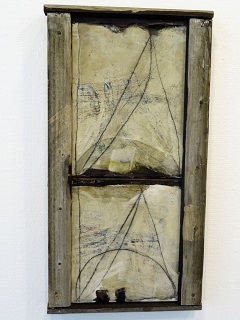Aspiration Windows
Home * Search * Alpha-Beta * Aspiration Windows

Aspiration windows are a way to reduce the search space in an alpha-beta search. The technique is to use a guess of the expected value (usually from the last iteration in iterative deepening), and use a window around this as the alpha-beta bounds. Because the window is narrower, more beta cutoffs are achieved, and the search takes a shorter time. The drawback is that if the true score is outside this window, then a costly re-search must be made. Typical window sizes are 1/2 to 1/4 of a pawn on either side of the guess.
Contents
Gradual Widening
Some programs, such as Crafty, also use a gradual widening on re-searches. For instance, if the window is, in pawns:
[g - 1/4, g + 1/4]
and the search fails high, the next search would be
[g - 1/4, g + 1]
It's important to note that the bound that didn't fail is unchanged. In a basic alpha-beta without search instability, one could have done the next search on
[g + 1/4, g + 1]
instead. However, a fully fledged search is typically full of search instability, and it will often happen that the above re-search will fail low! This is why it is best to only widen the bound that fails, and leave the other bound unchanged.
Modern engines, like Robbolito or Stockfish, start with a rather small aspiration window, and increase the bound that fails in an exponential fashion.
PVS and Aspiration
Using aspiration windows together with the principal variation search (PVS) causes some additional complications.
See also
Publications
- Hermann Kaindl, Reza Shams, Helmut Horacek (1991). Minimax Search Algorithms with and without Aspiration Windows. IEEE Transactions on Pattern Analysis and Machine Intelligence, Vol. 13, No. 12
- Reza Shams, Hermann Kaindl, Helmut Horacek (1991). Using Aspiration Windows for Minimax Algorithms. IJCAI 1991, pdf
Forum Posts
1995 ...
- Question about aspiration window by Werner Inmann, CCC, August 14, 1998
- aspiration windows by James Long, CCC, November 27, 1998
- Aspiration Rules... by Chris Pile, rgcc, February 5, 1999
- Aspiration search by James Robertson, CCC, April 20, 1999
- Aspiration search by Scott Gasch, CCC, August 13, 1999
2000 ...
- Aspiration window by Bas Hamstra, CCC, January 20, 2002
- Exact value of second best move in AlphaBeta with aspiration Window by Martin Bauer, CCC, August 01, 2002
- Aspiration search, PVS by Russell Reagan, CCC, December 28, 2002
- Unstable aspiration search by Sune Fischer, CCC, February 10, 2003
- Question about aspiration search by Jaime Benito de Valle Ruiz, CCC, March 23, 2004
- What is a common Aspiration window? by Joachim Rang, CCC, March 26, 2004
- aspiration search question by Daniel Shawul, CCC, May 13, 2004
- Q. Aspiration, PVS, Fail-Soft by David B. Weller, CCC, July 02, 2004
- PVS and aspiration windows by Tord Romstad, CCC, August 06, 2004
2005 ...
- Aspiration Window sizes by Renze Steenhuisen, CCC, March 14, 2005
- Bounds for aspiration window re-search by Sven Schüle, CCC, March 17, 2009
- A way to improve PVS by Sergei S. Markoff, CCC, September 07, 2009
2010 ...
- Apiration window by Don Dailey, CCC, March 27, 2010
- A few general questions... by Bill Henry, CCC, January 29, 2012 » Root, Exact Score
- optimal aspiration window for stockfish question by Uri Blass, CCC, March 12, 2012 » Stockfish
- Aspiration Windows: Rubbish! by Matthew R. Brades, CCC, July 16, 2012
- Aspiration window - effect? Issue with hashtables?! by Jens Bæk Nielsen, CCC, December 28, 2012
- Aspiration Windows by Jerry Donald, CCC, January 11, 2013
- Aspiration windows by Marco Pampaloni, CCC, May 14, 2013
- Your experience with PVS + Aspiration window by Fabio Gobbato, CCC, October 07, 2014 » Principal Variation Search, PVS and Aspiration
- Solving a fail low situation at the root by Alberto Sanjuan, CCC, November 03, 2014 » Fail-Low
2015 ...
- Parallel aspiration windows by Giuseppe Cannella, CCC, July 29, 2015
- Restarting iterative deepening by Harm Geert Muller, CCC, December 09, 2015 » Fail-Low, Iterative Deepening
2016
- Dynamic aspiration window by Sergei S. Markoff, CCC, May 26, 2016
- Aspiration Windows on the root search -- Determining margin by Andrew Grant, CCC, June 08, 2016
- Iterative Deepening Question by David Cimbalista, CCC, July 23, 2016 » Iterative Deepening
- Aspiration window with TT question by sandermvdb, OpenChess Forum, August 01, 2016 » Transposition Table
2016
- Conceptual question on aspiration windows by Jacob Wilkins, CCC, April 09, 2017
- (I)ID and PV dropout by Harm Geert Muller, CCC, June 17, 2017 » Fail-Low, Internal Iterative Deepening, Iterative Deepening
- Aspiration window problem by Sander Maassen vd Brink, CCC, October 30, 2017
External Links
- Aspiration Windows from Bruce Moreland's Programming Topics
- Aspiration from Wikipedia
- aspiration - Wiktionary
- aspire - Wiktionary
References
- ↑ Gerhard Hoehme - The Non-Euclidean Window (1964), mixed technique / wood on canvas, Art Museum, Bochum, North Rhine-Westphalia, Germany, Photo by Gerd Isenberg, October 30, 2016